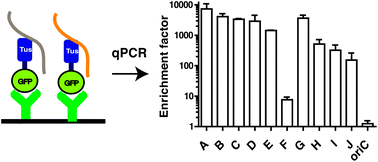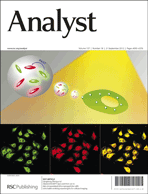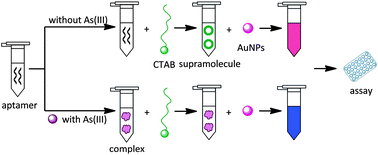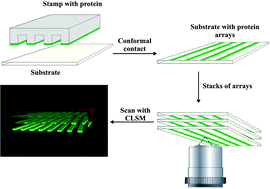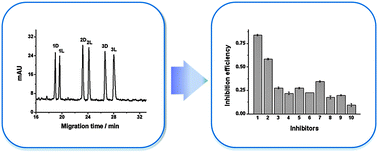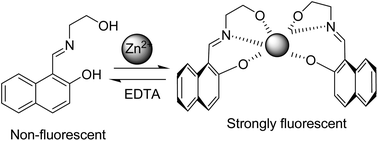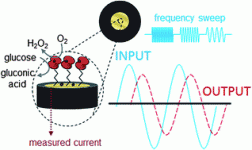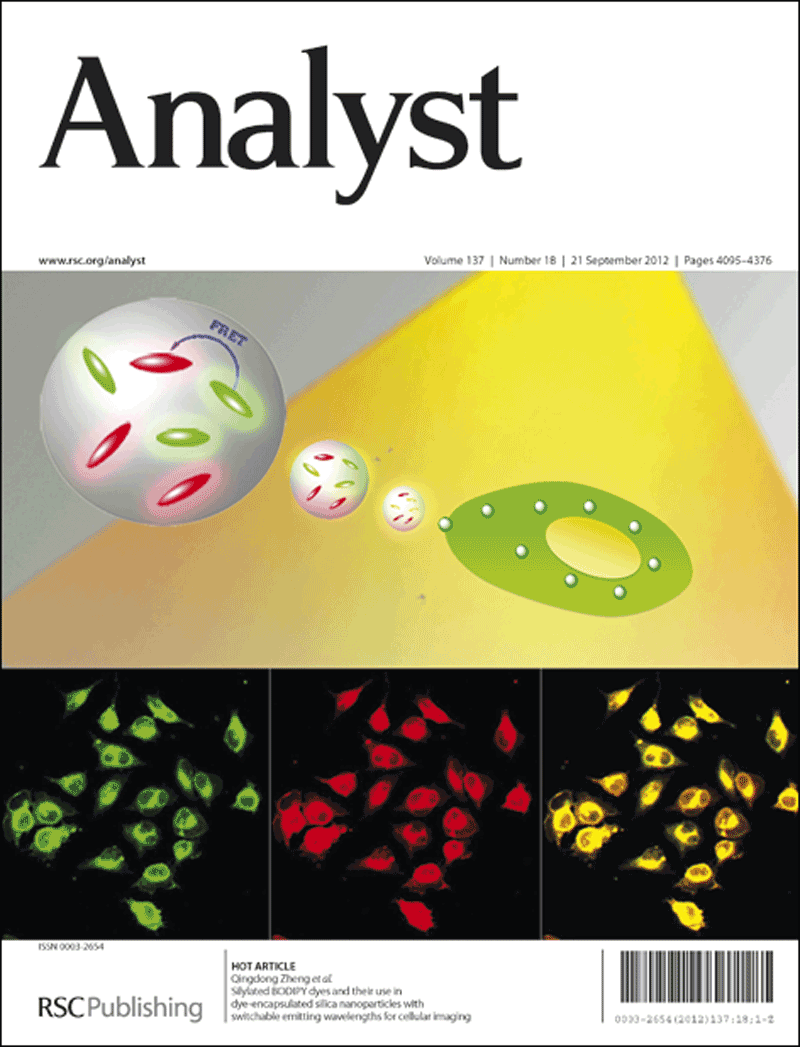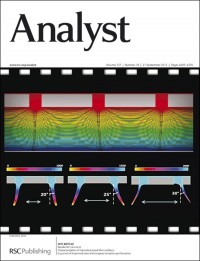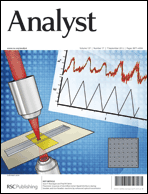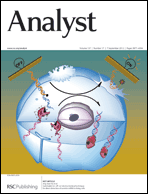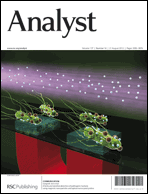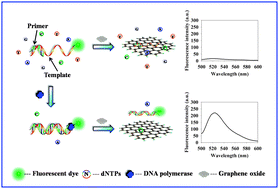This month sees the following articles in Analyst that are in the top ten most accessed:-
Easy Dual-Mode Ambient Mass Spectrometry with Venturi Self-Pumping, Canned Air, Disposable Parts and Voltage-Free Sonic-Spray Ionization
Nicolas V. Schwab , Andreia M. Porcari , Mirela B. Coelho , Eduardo M. Schmidt , Jose L. Jara , Jesui V. Visentainer and Marcos N. Eberlin
Analyst, 2012,137, 2537-2540 DOI: 10.1039/C2AN16312H
A Ratiometric Fluorescent Chemosensor for Iron: Discrimination of Fe2+ and Fe3+ and Living Cell Application
Supriti Sen , Sandipan Sarkar , Basab Chattopadhyay , Anuradha Moirangthem , Anupam Basu , Koushik Dhara and Pabitra Chattopadhyay
Analyst, 2012,137, 3335-3342 DOI: 10.1039/C2AN35258C
Ultrasensitive Colorimetric Detection of Heparin Based on Self-assembly of Gold Nanoparticles on Graphene Oxide
Xiuli Fu , Lingxin Chen and Jinhua Li
Analyst, 2012,137, 3653-3658 DOI: 10.1039/C2AN35552C
A new fluorescent and colorimetric probe for Cu2+ in live cells
Wei-Yong Liu , Hai-Ying Li , Bao-Xiang Zhao and Jun-Ying Miao
Analyst, 2012,137, 3466-3469 DOI: 10.1039/C2AN35559K
A colorimetric sensor based on catechol-terminated mixed self-assembled monolayers modified gold nanoparticles for ultrasensitive detections of copper ions
Siqiu Ye , Xinhao Shi , Wei Gu , Yixuan Zhang and Yuezhong Xian
Analyst, 2012,137, 3365-3371 DOI: 10.1039/C2AN35311C
Upconversion Nanoparticles in Biological Labeling, Imaging, and Therapy
Feng Wang , Debapriya Banerjee , Yongsheng Liu , Xueyuan Chen and Xiaogang Liu
Analyst, 2010,135, 1839-1854 DOI: 10.1039/C0AN00144A
Bacteriophage based probes for pathogen detection
Amit Singh , Denis Arutyunov , Christine M. Szymanski and Stephane Evoy
Analyst, 2012,137, 3405-3421 DOI: 10.1039/C2AN35371G
A sensitive dual signal amplification method in western blotting based on antibody-functionalised graphene oxide and gold nanoparticles
Hongjun Lin , Jingrui Huo , Aihong Zhang , Yingfu Liu , Qingming Wang , Yun Cai , Wantao Ying , Weijie Qin , Yangjun Zhang and Xiaohong Qian
Analyst, 2012,137, 3620-3623 DOI: 10.1039/C2AN35242G
Micro- and nanostructures and their application in gas chromatography
M. Mittermüller and D. A. Volmer
Analyst, 2012,137, 3195-3201 DOI: 10.1039/C2AN35184F
A Fluorescent Probe Directly Detect Peroxynitrite Based on Boronate Oxidation and Its Applications for Fluorescence Imaging in Living Cells
Fabiao Yu , Ping Song , Peng Li , Bingshuai Wang and Keli Han
Analyst, 2012,137, 3740-3749 DOI: 10.1039/C2AN35246J
Why not take a look at the articles today and blog your thoughts and comments below.
Fancy submitting an article to Analyst? Then why not submit to us today or alternatively email us your suggestions.


